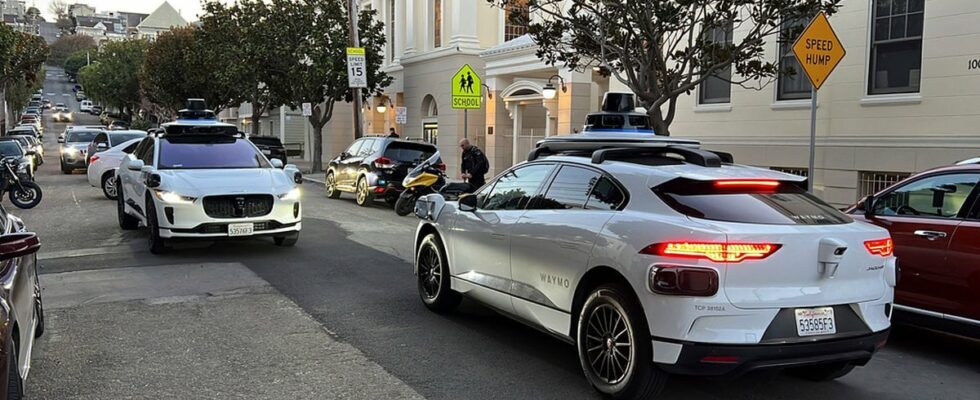On the hilly roads of San Francisco, California, it is not unusual for two white cars with small black hats to meet each other. The unusual thing – apart from the hats – is that no driver is behind the wheel. Since August 2021, two million driverless taxi trips have been completed in the city, which has become the face of self-driving cars.
Even in big Chinese cities like Beijing, Shanghai, Shenzhen and Wuhan, driverless cars are rolling.
DON’T MISS:
Now the rules are changing plug-in hybrids – changed conditions
Fines for snow on the skid plate – this applies
Self-driving cars use a combination of cameras, scanners and radar to “see” their surroundings. Overly positive
But outside of the US and China, the revolution in autonomous vehicles that was predicted five to ten years ago has yet to happen.
“I would say that it is two steps forward and one step back,” says Yihan Yu, who researches self-driving vehicles at Chalmers.
China is also far ahead when it comes to autonomous vehicles. Search engine company Baidu’s taxis are available in more than ten cities.
For example, Volvo signed an agreement with Uber in 2017 to deliver 24,000 XC90s to Uber, which developed its own self-driving technology, until 2021.
— But that obviously didn’t happen. So I would say that people have generally been overly positive, says Yu.
An average car is stationary 90 percent of the time, taking up space. An autonomous car can be shared by several, thereby freeing up space and being used more efficiently. They can also be safer in the long run, as they never lose attention, are drunk or tired.
But accidents happen – like in October 2023 when a car belonging to GM-owned Cruise dragged a woman six meters before stopping.
— The ethical question is clever, because who is responsible? says Yu.
It is theoretically possible to meet a driverless vehicle even on Swedish roads. It is possible to get type approval for the European market for 1,500 vehicles per year, says Anders Eriksson, technical investigator at the Swedish Transport Agency.
“But there are many manufacturers who do not see that it is economically justifiable to produce so few vehicles,” he says.
DON’T MISS:
Unexpected tax hits – used cars to avoid
Then you need to renew your driving license – even though it has not expired
Anders Eriksson, technical investigator, automated vehicles, Swedish Transport Agency. Press image. Lack of legislation
The driverless vehicles that roll in Sweden today do so either in fenced areas – which do not require a permit – or in trial operations. These include vehicle manufacturers, operators such as Keolis and Nobina and start-up companies that have carried out various tests. At the moment, seven such trials are underway.
Slowly, roughly at walking speed, the driverless truck rolls with goods at Apotea’s warehouse area in Morgongåva.
There is an example at the company Apotea’s large warehouse building in Morgongåva in Uppsala county. A small driverless truck now rolls here, moving goods 800 meters from one building to another.
There isn’t even a driver’s compartment to step into. If a person needs to take control, it takes place remotely from a control room in Gothenburg.
The truck is the second in commercial operation for the Swedish company Einride. The first was put into use last year in the United States. The company has also signed a contract with the port of Dubai, the world’s tenth busiest.
DON’T MISS: Our podcast about cars – Under the Hood
National legislation is missing
— Our ambition is to scale up both Europe, the USA and Dubai. But we have not shared any figures about the number, says Henrik Green, head of Einride’s autonomous operations.
The electric truck will make three turns a day in the Apotea area, where it coexists with other goods traffic, and needs to be charged for a couple of hours every other day.
Perhaps it is only a matter of the future before there are more self-driving cars and trucks on Swedish roads.
— What is missing, as has been done in other European countries, is to come up with more permanent national legislation, which explains a little more about issues of responsibility and the like, says Anders Eriksson.
